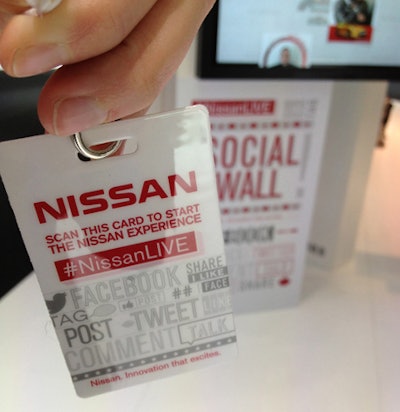
Each visitor to Nissan’s exhibit at the Geneva Auto Show received a badge embedded with an R.F.I.D. tag. Nissan provided iPads where guests could register the cards and link their Twitter and Facebook accounts. Then, each time the guest swiped the card at one of the 14 activation points, information would instantly post to those social networks.
Photo: Courtesy of Nissan
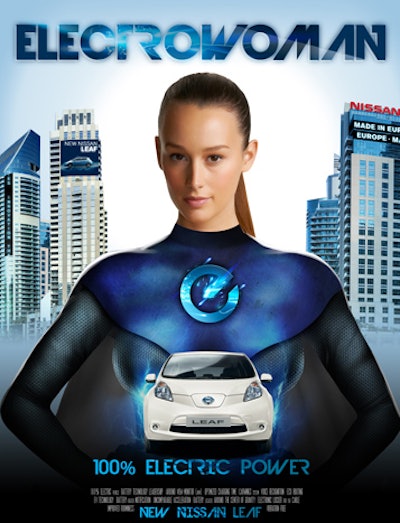
The photo booths superimposed different backgrounds and overlays such as "Electrowoman" as part of the Nissan Leaf messaging. The photos were instantly shared on the guest's social networks, creating what DwinQ C.E.O. Patrick Sweeney called “social media product placement,” which puts a brand’s logo and messaging right in the user's Facebook stream, rather than on the side in a feed.
Photo: Courtesy of Nissan
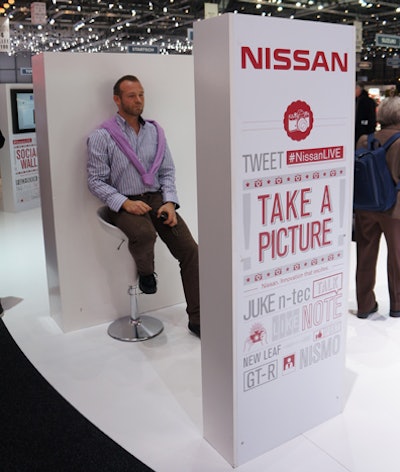
Guests swiped their R.F.I.D. badges before sitting for a picture in the photo booth. The system prompted them to approve the photo before it would post to their Facebook and Twitter accounts. Alternately, guests could opt to have the photo sent to their email.
Photo: Courtesy of Nissan
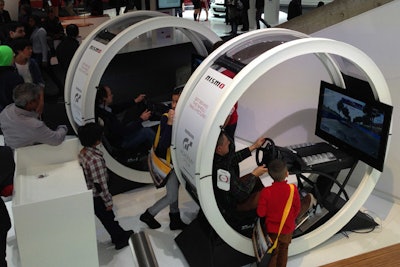
The GT Academy area was based on Nissan’s virtual-to-reality contest that allowed players of Sony’s Gran Turismo Playstation game to become race drivers. At the Geneva Show, Nissan set up simulation pods where guests could play the game and share a photo of the experience on their social networks.
Photo: Courtesy of Nissan
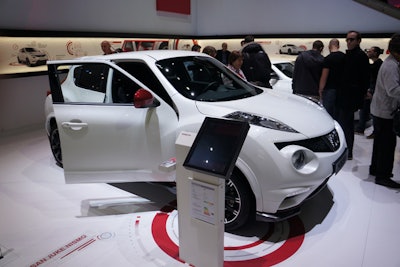
At each of the vehicle displays, guests could swipe their R.F.I.D. badge to share a photo of the car on Facebook and Twitter.
Photo: Courtesy of Nissan
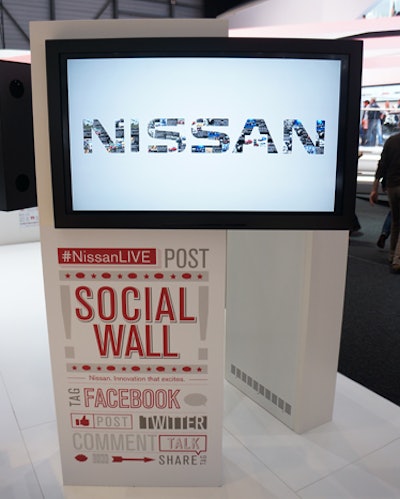
Three social media walls displayed content being shared about Nissan on Facebook and Twitter.
Photo: Courtesy of Nissan



















